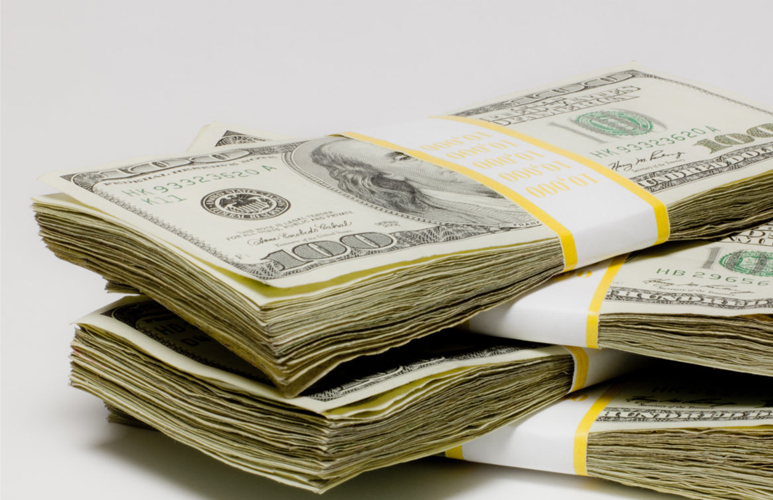A minimum of seven figures — that’s how much you’ve been hypothetically tasked to raise for your charity. This job is perfect for you because you enjoy a challenge. You thrive under pressure.
Now, it is time to strategize. If you reduce charitable fundraising to two extremes, you could motivate one million people to donate $1 each, or you could inspire one person, in possession of the necessary resources, to donate $1 million.
Ruane Remy, communications officer at Toronto Metropolitan University told participants of her session “Write and Wrong: Developing Million Dollar-plus Proposals,” that both options achieve your financial goal.
Yet, you wonder, with option one, how many prospective donors would you need to attract to find those generous million people. With option two, however, you place all your metaphorical eggs into one basket, and that basket meets your full financial goal. And meeting your financial goal potentially faster, means positively impacting the communities your charities serve sooner.
The world of fundraising significant gifts — often in the range of $1 million and more — typically requires tools such as a proposal. A proposal, in the form of a document or presentation, is where the fundraiser makes a case as to why, out of all the other charities a donor could support, they should choose to support this one particular charity.
For instance, why should they grant you $1million or more instead of the other guy? Remy provided five tips you to remember when you answer that question and tell a donor exactly why.
- Know Your Donor
When communicating effectively, one of the key rules is to know your audience. In the case of fundraising amongst high-net worth individuals, your audience could be a single titan of industry, a wealthy and retired married couple, a family foundation with the heirs of a fortune sitting on the board, or the director of a corporation’s social responsibility division who is in charge of doling out the company’s donations.
Before a word lands on the page for the proposal you’re developing, you need to know what your donors care about, what services they prefer to fund, and what their motivations are to give. Having the answers to these types of questions empowers you to strategically craft your proposal and increases the chances the project you’re writing about resonates enough with them to unlock their generosity.
- Don’t Submit A “Cold Ask”
It is unwise to submit a proposal to an individual to whom you have never spoken or to a funding organization if you’ve never had a chat with one of their key representatives. If you don’t speak to your prospective donor or their close representative, even if you have a hardworking research team on staff, you won’t likely be able to obtain fully nuanced answers to all the questions posed in tip number one.
Nuance could be the difference between the donor giving you a million dollars instead of another charity who has also acquired equally good background research.
Relationships remain at the heart of successful philanthropy. This still applies even if instead of preparing a proposal from scratch, you’re answering questions through a funder’s online grant application. Your bid for financial support is more likely to stand out if the funder has had a discussion with you about how their goals align with yours before you ever submit.
Think about your own personal decision making. If you only had $50 to give to help a neighbor in need purchase groceries, to whom would you most likely give it — the neighbor you speak with, or the one who has never said a word in your direction?
- Outline The Problem
The problem-solution narrative is integral to proposal writing structure. Yet, while detailing the solution, fundraisers sometimes neglect to outline the problem. Even if the donor is already aware of the problem, still elaborate in writing on the need that funds will meet. If you like math, think about your proposal like balancing an equation. If you are pitching a million-dollar solution, then you better have a problem that’s worth every penny.
If you’re asking a donor to fund the recruitment of a pediatric nurse practitioner in a remote community, for example, demonstrate the need with the support of data. Tell them about the infant mortality rate in the remote community compared to a more accessible community with better pediatric care — 40 deaths versus 4 deaths per 1,000 live births, respectively. Appeal to their emotions and let them know that without donor support, more young lives will be lost.
4. Don’t Rely On AI
After OpenAI released ChatGPT in late 2022, it popularized the use of generative Artificial Intelligence (AI). The internet became flooded with content written by AI language models, tools that in general could save you time if you used them as writing assistants. Yet, the potential benefits of using generative AI to craft your proposal do not currently outweigh the negatives.
First, some AI language models are known to introduce inaccuracies, known as AI hallucinations, into the writing they generate. In addition, the default AI voice can sound bland and uninspiring. Imagine if all the content you ever read, even if it didn’t seem like it had been written by a robot, possessed the same tone and turns of phrase. Then on top of all of that, AI is only as good as the data set from which it learns and draws, and the instructions with which you give it.
Considering that grant proposals for $1 million or more are highly tailored to individual donors, it’s likely easier to develop the proposal yourself than to train an AI language model to do it for you. That said, AI is evolving quickly, and so is the field of prompt engineering (learning how best to communicate with AI to produce your desired result), and as such, all of these issues could be negated in the very near future.
- Remember To Thank Your Donor
“Thank you” are two simple words with a big impact. Fundraisers will typically remember to thank their donor once financial support has been received but should also thank their donor before they even see a cent.
Thank your prospective donor in your proposal, even if you don’t yet know they are willing to donate. Show them your gratitude for their interest in and consideration of supporting your project.
A 2014 study, “Warm Thanks: Gratitude Expression Facilitates Social Affiliation in New Relationships via Perceived Warmth,” published in the journal Emotion, demonstrated that thanking a new acquaintance for their help increases the chances that person will seek an ongoing social relationship with you. And as discussed in tip two, fundraising relies on relationships. Even if the funder doesn’t give this time, perhaps they’d be open to donating at the next opportunity.










